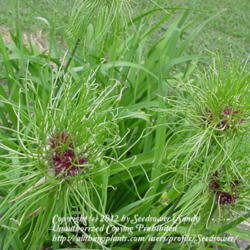
Wild garlic (Allium vineale) grows in fall and spring in lawns, fields, and gardens in all but the coldest climates. Often called wild onion, this plant is native to Europe. Wild garlic is especially noticeable in dormant, warm-season lawns or near long-lived perennials. Dig plants in fall or spring, carefully lifting plants from beneath to get the roots and little corms, which will grow into new plants. In early summer, brush survivors with a glyphosate herbicide.
Weed Control TechniquesDigging. Weeds that regrow from persistent roots must be dug. Use a spade or digging fork to dig spreading perennials, such as bindweed, Canada thistle, and quackgrass. Start digging a foot away from the plant's center to loosen the soil. Then lift the weed from beneath, which reduces how many root pieces are likely to break off and regrow. Dandelion, dock, and other weeds that grow from persistent taproots can be dug the same way, or you can use a special fork-like tool called a dandelion weeder to pry them up. Dig very large taproots that are difficult to pry loose. In lawns and other places where digging dandelions is not practical, use a sharp knife to slice off the leaves and the top inch or two of taproot at a diagonal angle. Some weeds that are easily pulled when the soil is moist must be dug from dry soil.
Glyphosate herbicide. It is safer to use a strong herbicide to control a dangerous weed such as poison ivy than to engage in hand-to-hand combat. Mix a small amount of glyphosate herbicide according to label directions, and use a paintbrush to ″paint″ weed leaves on a warm day when rain is not expected for at least 48 hours. Be careful, because spills and splatters also will injure or kill other plants. Ready-to-use glyphosate sprays are another option, but spraying with this chemical should be done only in still weather. A small amount of wind can carry the spray to nearby garden plants. As an extra precaution, surround the weed with a bottomless cardboard box before applying herbicide. Do not use glyphosate near water, and limit your use to dangerous plants, such as poison ivy. Glyphosate works by interfering with photosynthesis, so plants die slowly over a period of several days.
Image courtesy of Flickr Creative Commons, wlcutler